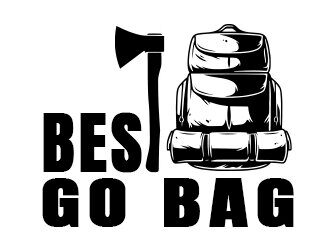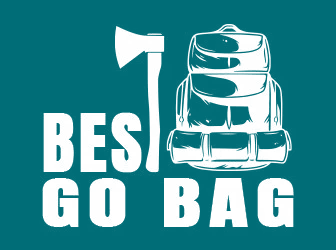Back in the late 1800s, Mark Twain reportedly sent a cable from England to the United States. It read: “The reports of my death are greatly exaggerated.” He had been contacted by an American journalist inquiring as to his rumored health problems or possible death.
Well, Twain’s now-famous quote can also be said about radio. Yes, it’s one of the oldest ways many of us learned about local, national, and international news. But radio has stood the test of time very well and is still relevant today.
Did you know that 90% of adults still tune into the airways every week? Why? Because radio remains the quickest and most reliable way to gain important information. Especially during a crisis.
And it’s not just learning about critical information. It’s being able to act on it immediately. Radio has helped many people survive a crisis that otherwise might have done them in.
Today, some radios can be charged with the free power of the sun. I want to tell you about the evolution of solar-powered radios and why it’s crucial for everyone to own at least one.
Launched in the Fifties
Most people think solar-powered radios are a relatively new thing. Actually, the first commercially available solar-powered radio hit the market 67 years ago.
Two years after the invention of the first solar energy battery, the Admiral Corporation of Chicago, Illinois produced transistor radios in a variety of colors in 1956. Each included an optional “Sun Power Pak.”
Engineer Harry Thanos is credited with the invention. His radio operated from seven series-wired silicon solar energy cells he acquired from National Fabricated Products.
Both General Electric and Radio-Electronics tried to beat Thanos and Admiral Corporation to the punch earlier that year. But neither of their solar-powered transistor radios was ever put into production.
Power pack was extra
Then on April 14, 1956, Admiral Corporation announced its Model 7L series of 6-transistor portable radios that included an optional 32-silicon cell power pack.
Eugene B. Germany, president of Lone Star Steel Company, was the first buyer of this groundbreaking solar-power radio.
The price was $59.95 for the radio alone and an additional $185 for the optional power pack.
For $40 more, buyers could acquire a custom leather carrying case with a zippered backside pocket for storing the “Sun Pak.”
Innovation reduces price
Many Americans were excited about this new invention. But sales suffered due to the high cost of the power pack. It was priced at more than $2,000 in today’s dollars.
It wasn’t until the next year that engineers figured out how to build solar cells into the handles of radios.
Hoffman Radio, a division of Hoffman Electronics Corporation, used that strategy to build a “SOLARADIO” they sold for $150 plus $9 for four 1.5-volt AA rechargeable batteries.
This radio was available in five different cabinet colors. Other than the handle containing the solar cells, it was identical to Hoffman’s non-solar “Home and Travel Transistor Radio.”
Hoffman Radio dominates market
As with every new product that catches on, more companies jumped into the fray. Many of their radios were earphone-only versions.
Among the companies were the Acopian Technical Company, game and toy manufacturer E.E. Fairchild, International Rectifier, and Science Electronics.
By making improvements on its original model, Hoffman Radio dominated the solar radio market. These next-generation radios were not designed to recharge internal batteries. They all operated either from internal batteries or solar power.
Zenith offered its Royal 555 and Royal 56 solar radios in the mid-1960s, competing with Hoffman and companies based in Japan and Australia.
Following a general lull in the solar radio market through the 1980s, interest perked up again in the 1990s. Since then, a number of companies have produced solar-powered radios.
Radios work when phones don’t
There’s a very good reason why nearly every preparedness list includes an emergency radio. Today, solar-powered radios are particularly beneficial to those in the outdoors and those who occasionally lose power indoors.
Regardless of whether it’s an approaching hurricane, snowstorm, derecho, or a sudden tornado outbreak, we need to be aware of what’s headed our way. There are many true-life stories about people who took cover just in time, thanks to the warnings they received on their radios.
During some emergencies, such as the recreational vehicle bombing in Nashville, Tennessee, in late 2020, communications went down. Many were unable to use their cellphones.
This is one of the things that makes battery-powered and solar-powered radios so important. You can still get important information through a radio you sometimes can’t get through your phone.
What should an emergency radio include?
When it comes to selecting an emergency radio, make sure it’s a National Oceanic and Atmospheric Administration (NOAA) weather radio. Those radios provide timely information about weather threats in your area. Including evacuation routes.
You also want a radio with a powerful battery inside. And other ways to charge it. Including plugging it into an outlet, exposing the radio’s solar panel to the sun, and cranking it up by hand.
You may find yourself in a position where you need to charge your cellphone. Or a tablet, e-reader, camera, flashlight, cooling fan, or other item. Select an emergency radio that can do all that.
There’s no guarantee you’ll have daylight when a weather emergency interrupts your life. You may also need to light your path. So, make sure your radio includes a bright flashlight.
Other important features
Other features you want in an emergency radio are just as practical. For example, you don’t want one that’s heavy. Make sure it’s easily portable.
You also want a radio that’s compact yet durable. One that can take a few dings without getting damaged. And what about some extras the average person might not think about?
Choose an emergency radio that includes a sturdy metal clip so you can attach it to a backpack or belt loop. Select one that has a charging indicator so you always know how much juice it has. Pick one with an earphone jack so you can listen discreetly.
Finally, you want an emergency radio that’s priced right. If for no other reason than so you can buy several of them. For your home and vehicle, and even as gifts for loved ones.
Solar-powered radios have been around longer than most people think. And a few of the latest ones have all the bells and whistles you need. Don’t leave this crucial item out of your preparedness plans.


